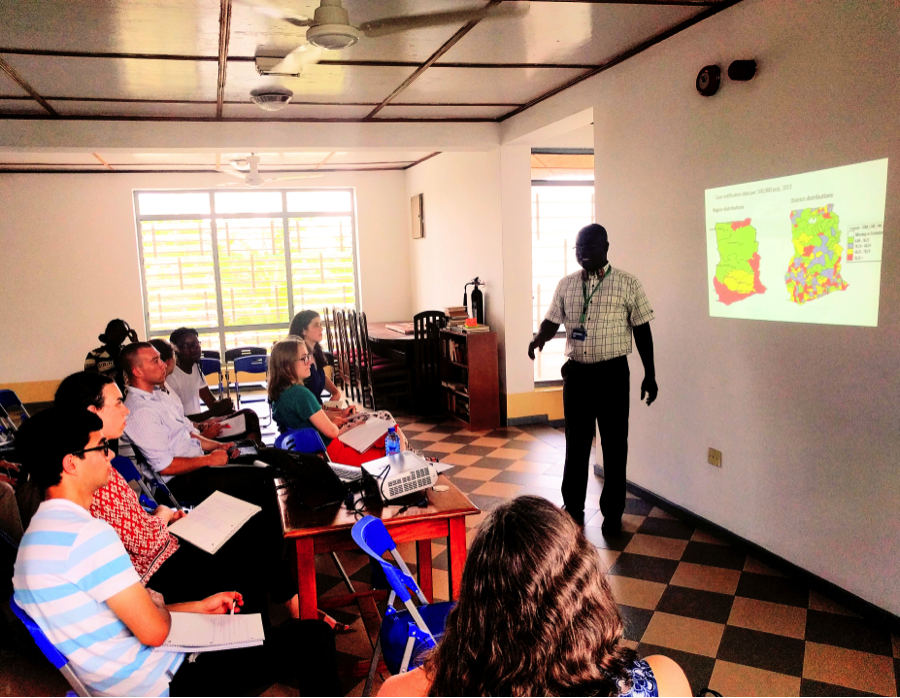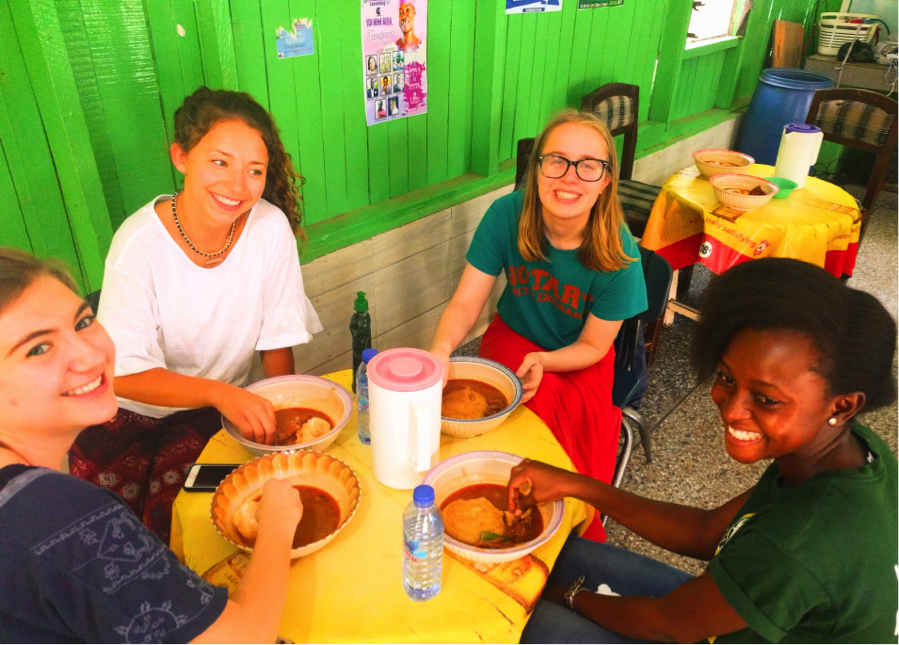by Kaila Helm, Biological Basis of Behavior ’20; Kathleen Givan, Bioengineering and Political Science ’20; Kathryn Cocherl, Bioengineering ’20; Hope McMahon, Chemical and Biomolecular Engineering ’18; Dave Pontoriero, Biotechnology MS ’18

David Issadore, a faculty member in the Department of Bioengineering at the University of Pennsylvania teaches an engineering course ENGR566 – Appropriate Point of Care Diagnostics. As part of this course, he and Miriam Wattenberger from CBE, have taken nine Penn students, most of them majoring in Bioengineering, to Kumasi, Ghana, to study the diagnosis of pediatric tuberculosis. While in Ghana, these students are blogging daily on their experiences.
Our team woke up and hit the floor with some Zumba. Following this exercise, we went to the campus cafeteria for breakfast. The food consisted of rolls with jam, sausages, omelets, and coffee, tea, or Milo (Australian chocolate milk).

Our first academic activity of the trip was after breakfast! We made it back to the house for a lecture from Dr. Anthony Enimil, a local pediatrician. During his initial lecture, he spoke about Ghanaian culture and how it related to our group, both as tourists and and as medical professionals. Dr. Enimil said that misconceptions mostly stemmed from tourists who think they are above Ghanaians. Ghanaians are multilingual, intelligent, and very proud of their culture. This pride is particularly prevalent in Kumasi and the Ashanti region, which is considered the cultural capital of Ghana. The question and answer period was particularly interesting, considering that we have spent a semester learning about tuberculosis without necessarily having any ability to learn specifics about the situation in Ghana. One fact that we found remarkable was that the WHO estimate of tuberculosis prevalence was found to be only one-quarter of the actual prevalence in Ghana.
The next portion of the day was critically important, if somewhat futile: a tour to get us oriented around campus. The KNUST campus is, according to a casual guestimation poll of the Ghana Nine (the nine Penn students on the trip), approximately five times bigger than the Penn campus. To make matters worse, large parts of the campus are, to our untrained eyes, identical stretches of unkempt jungle. We ended our tour with fufu for lunch at a chop bar, a casual Ghanaian restaurant that apparently serves the purpose as Wawa: keeping the Ghanaian students happily fed for cheap. We knew the food was spicier when our right hands (used in Ghana as utensils) tingled for a solid hour post-exposure. However, the fufu we ate was legitimate and delicious, and there were no complaints from the Ghana Nine about the food, particularly when we had a lovely post-meal Icy Cup (a tangy yogurt smoothie). It distantly reminded most of us of yogurt.

Our second academic activity of the day was a continuation of the lecture led by Dr. Enimil. This time we got into the nitty-gritty details of the tools that are used to diagnose TB. Even with the progress made with technological advances, a recurring issue is stigma. TB is curable, but the perception of it as a “disease of death” has made it highly stigmatized. Much work needs to be done to reach some of the benchmarks set. For example, the hope is to eliminate the disease burden by 2035. To do this, Ghanaians must continue strengthening diagnostic methods. We discussed the microscopic culture molecular examination, chest radiographic findings, and sputum sample usage with the Gene Xpert. After another very stimulating question and answer session, the Ghana Nine took a 90-minute break, filled with naps and a competitive game of cards.
We then enjoyed a delicious dinner that consisted of salted fish, plantains and (white) yams (collectively called ampesi), palaver sauce, and avocado. After dinner, the whole group took a walk to the shopping mall on campus to get an ice cream treat to cool us off. We ended the night reflecting on our day, speed friending, and discussing all the new information we learned about TB in Ghana to prepare for our visit to the clinics.
